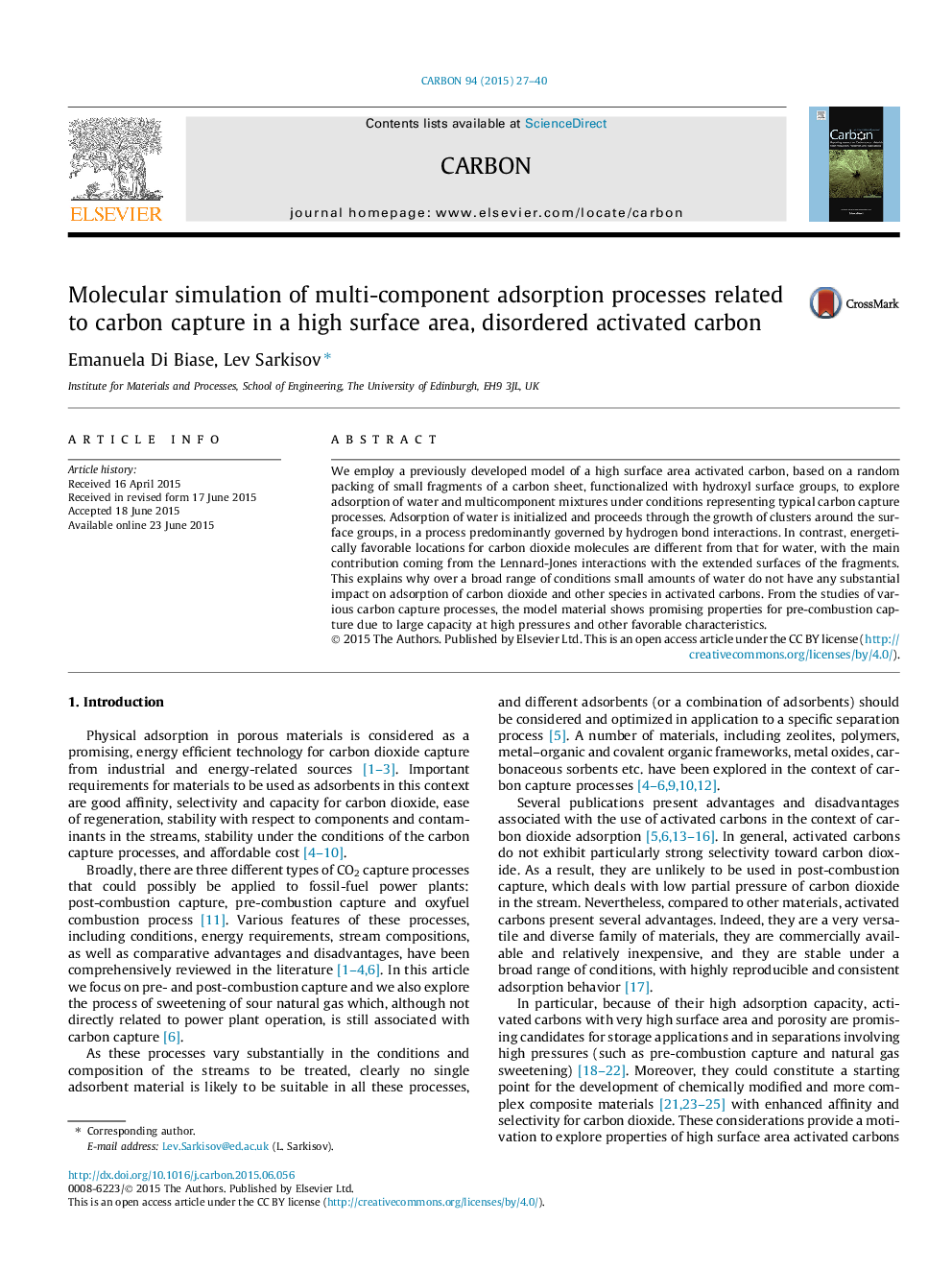| Article ID | Journal | Published Year | Pages | File Type |
|---|---|---|---|---|
| 7851090 | Carbon | 2015 | 14 Pages |
Abstract
We employ a previously developed model of a high surface area activated carbon, based on a random packing of small fragments of a carbon sheet, functionalized with hydroxyl surface groups, to explore adsorption of water and multicomponent mixtures under conditions representing typical carbon capture processes. Adsorption of water is initialized and proceeds through the growth of clusters around the surface groups, in a process predominantly governed by hydrogen bond interactions. In contrast, energetically favorable locations for carbon dioxide molecules are different from that for water, with the main contribution coming from the Lennard-Jones interactions with the extended surfaces of the fragments. This explains why over a broad range of conditions small amounts of water do not have any substantial impact on adsorption of carbon dioxide and other species in activated carbons. From the studies of various carbon capture processes, the model material shows promising properties for pre-combustion capture due to large capacity at high pressures and other favorable characteristics.
Related Topics
Physical Sciences and Engineering
Energy
Energy (General)
Authors
Emanuela Di Biase, Lev Sarkisov,
